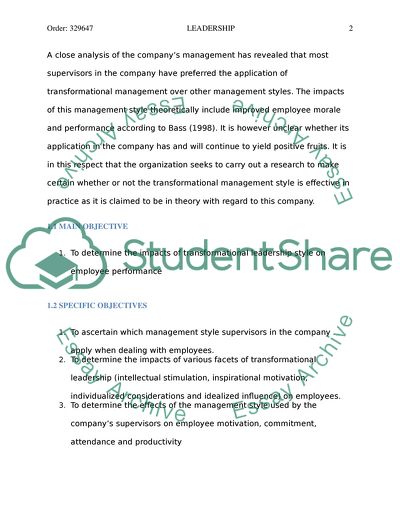Cite this document
(The Impacts of Transformational Leadership Style on Employee Research Proposal Example | Topics and Well Written Essays - 2500 words - 6, n.d.)
The Impacts of Transformational Leadership Style on Employee Research Proposal Example | Topics and Well Written Essays - 2500 words - 6. https://studentshare.org/human-resources/1558831-leadership
The Impacts of Transformational Leadership Style on Employee Research Proposal Example | Topics and Well Written Essays - 2500 words - 6. https://studentshare.org/human-resources/1558831-leadership
(The Impacts of Transformational Leadership Style on Employee Research Proposal Example | Topics and Well Written Essays - 2500 Words - 6)
The Impacts of Transformational Leadership Style on Employee Research Proposal Example | Topics and Well Written Essays - 2500 Words - 6. https://studentshare.org/human-resources/1558831-leadership.
The Impacts of Transformational Leadership Style on Employee Research Proposal Example | Topics and Well Written Essays - 2500 Words - 6. https://studentshare.org/human-resources/1558831-leadership.
“The Impacts of Transformational Leadership Style on Employee Research Proposal Example | Topics and Well Written Essays - 2500 Words - 6”. https://studentshare.org/human-resources/1558831-leadership.


